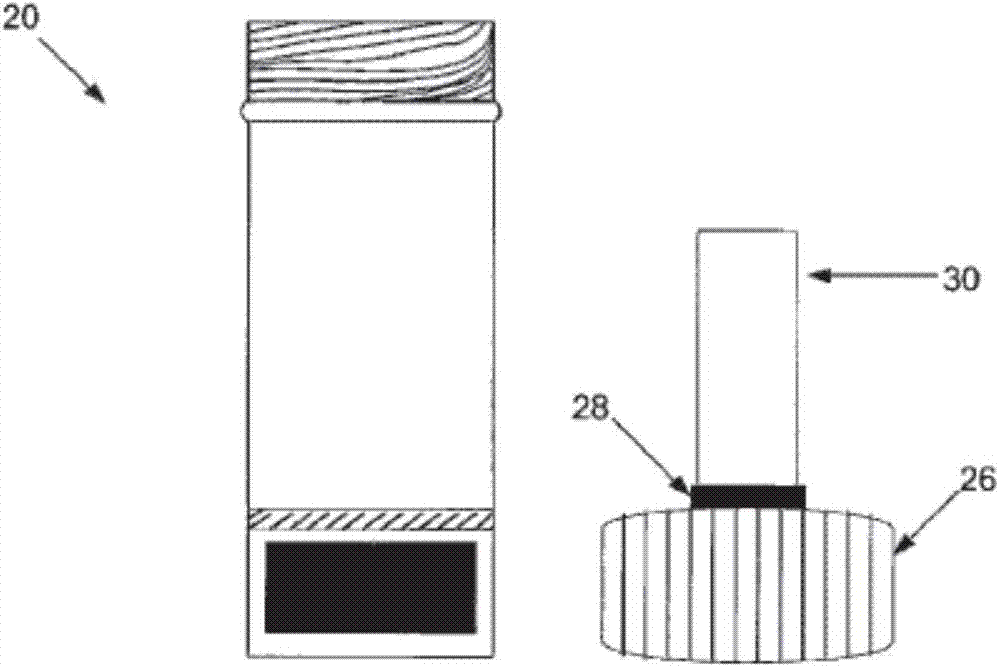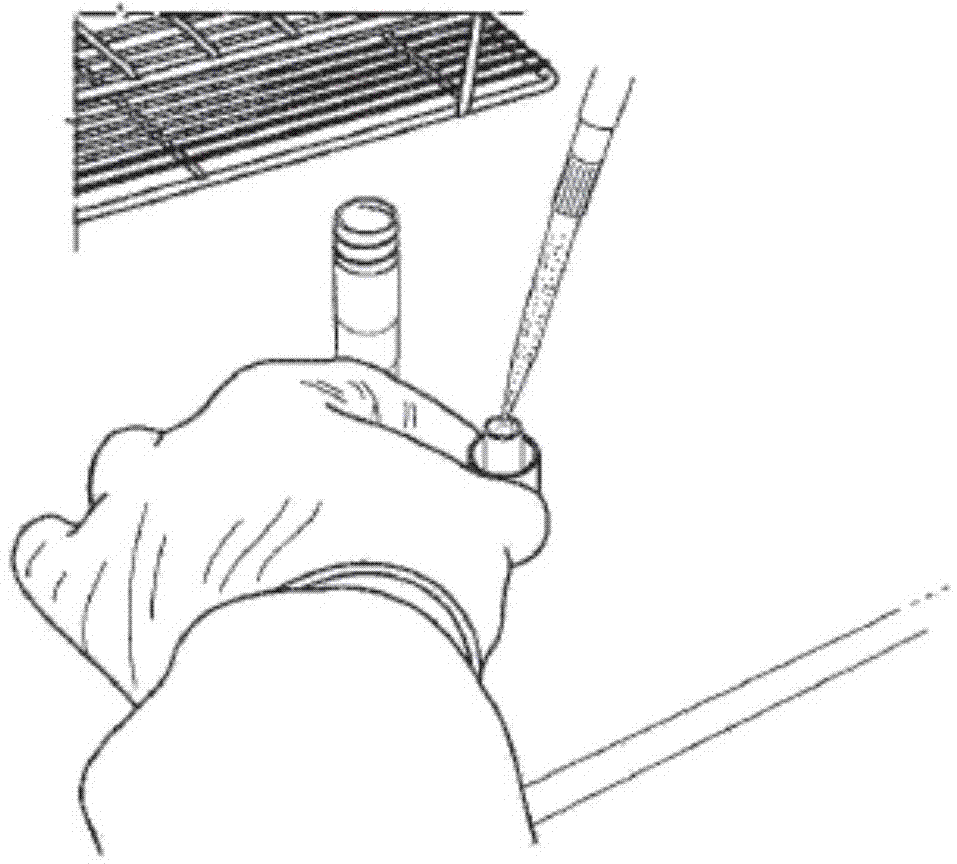Matrix and system for preserving biological specimens for qualitative and quantitative analysis
A biological sample and matrix technology, applied in the direction of analysis materials, biological testing, application, etc., can solve the problems of micro-extraction difficulties and achieve the effect of reducing the cost of transporting infectious materials
- Summary
- Abstract
- Description
- Claims
- Application Information
AI Technical Summary
Problems solved by technology
Method used
Image
Examples
Embodiment 1
[0130] One (1.0)ml Sample Preparation and Device Recovery Kit
[0131] Kit components:
[0132] This example provides a kit for the preparation, transport and recovery of thirty-six (36) dried biological samples from bodily fluids or tissues. Materials and reagents for preparation and recovery of thirty-six (36) one (1.0) ml samples for dry environment shipment consisted of the following components:
[0133] components
quantity
Device kit container (tube)
36 each
Recovery buffer
3X 13ml
Disposable 3ml syringe
36 each
15ml conical centrifuge tube
36 each
[0134] Storage and Handling:
[0135] Upon receipt, store all kit components dry at room temperature (15-25°C). Only use the unit container tube when the indicating desiccant color is blue. Device kit containers should not be used if the indicator desiccant is white or pink in color. Such as 1000 μl pipette, 1000 μl sterile DNase-free with aerosol barrier, ...
Embodiment 2
[0137] Sample preparation using device kits
[0138] Sample preparation steps are performed in a biosafety cabinet using aseptic technique and general precautions related to the handling of potentially infectious materials. Before starting the sample preparation process, one should be familiar withFigure 1A Procedure for using the device kit described in &1B.
[0139] Before loading the sample liquid suspension of the biological sample containing the analyte of interest, uncap the device container, turn it over, and place the absorbent matrix up on the clean work surface ( Figure 1A &1B). Add approximately up to 1 ml of sample liquid slowly to the top of the matrix plug and allow to absorb completely into the matrix. Allow the device kit matrix loaded with sample liquid to air dry. Generally speaking, it takes about 4.5 to 5 hours to air dry in a biological safety cabinet. Once the sample is completely dry, the cap holding the dried sample-containing matrix is carefully ...
Embodiment 3
[0141] Sample recovery using device kits
[0142] The sample recovery procedure was likewise performed in a biosafety cabinet using aseptic technique and usual precautions related to the handling of potentially infectious materials. Essentially, a sterile 3 or 5 ml disposable LUER-LOK syringe (supplied with the kit) is inserted into the 15 ml receiving tube (also supplied with the kit). Remove the plunger from the syringe barrel. The absorbent matrix containing the dried sample is transferred to the syringe by pressing the matrix against the sterile interior of the syringe barrel with just enough pressure to detach it from the attached cap and allow it to fall freely to the bottom of the syringe. In the syringe barrel ( Figure 4 &5). Place the syringe cylinder with the removed matrix plug into the 15 ml conical receiver tube, which is further placed into the rack. Slowly and directly apply approximately 1 ml of reconstitution buffer (supplied with the kit) to the top of t...
PUM
| Property | Measurement | Unit |
|---|---|---|
| length | aaaaa | aaaaa |
| diameter | aaaaa | aaaaa |
| size | aaaaa | aaaaa |
Abstract
Description
Claims
Application Information
 Login to View More
Login to View More - R&D Engineer
- R&D Manager
- IP Professional
- Industry Leading Data Capabilities
- Powerful AI technology
- Patent DNA Extraction
Browse by: Latest US Patents, China's latest patents, Technical Efficacy Thesaurus, Application Domain, Technology Topic, Popular Technical Reports.
© 2024 PatSnap. All rights reserved.Legal|Privacy policy|Modern Slavery Act Transparency Statement|Sitemap|About US| Contact US: help@patsnap.com










